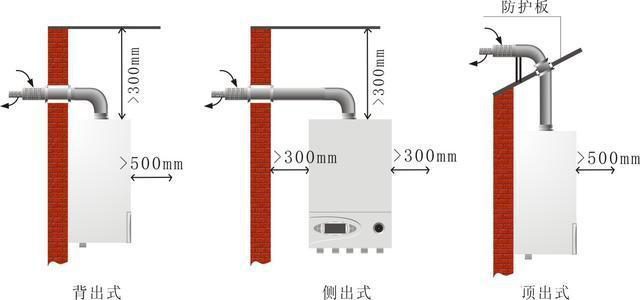1. The flue should be straight, good air tightness, few […]
1. The flue should be straight, good air tightness, few accessories and less resistance. When laying the horizontal flue, it should maintain a head-up arrangement of more than 1%, and try to avoid the arrangement along the slope.
2. The flue and chimney of the fuel gas boiler room should be constructed of steel or reinforced concrete, and the low point of the flue and chimney should be equipped with water-sealed cold air water drainage pipes.
3. The thickness of the steel plate of the metal flue is generally 4~6mm. When designing the flue, sufficient reinforcing ribs should be configured to ensure the strength and rigidity requirements.
4. The thermal expansion of the flue should be compensated, and the compensation amount should be calculated and the type selected correctly.
5. The steel flue shall have thermal insulation measures and reliable fixation.
6. A fuel gas boiler room should have one boiler corresponding to one chimney. When several boilers are required to share a flue or chimney, the ventilation and pumping power of each boiler should be balanced.
7. When the flue is arranged, the necessary thermal measuring points and environmental protection measuring points shall be set at appropriate positions. A single oil-fired boiler with a rated evaporation capacity greater than or equal to 20 t/h or a single rated thermal power greater than or equal to 14 MW must be equipped with a fixed continuous monitoring instrument for the concentration of smoke and SO2 emissions in the flue gas.
8. In the place where the flue gas is easy to gather and when multiple boilers share a chimney or a general flue, an explosion-proof door should be installed on the flue behind each fuel gas boiler, and the position of the explosion-proof door should be conducive to pressure relief. It should be located in an appropriate position that does not endanger the safety of personnel and before turning. When the explosive gas may endanger the safety of the operator, a pressure relief guide tube should be installed on the explosion-proof device.
9. For some boiler rooms with long flues, the resistance should be accounted for, and the corresponding blower and induced draft fan (when there is induced draft fan) should be selected to ensure the smooth exhaust of smoke.
10. The corresponding anti-corrosion measures should be considered in the chimney. The flue gas temperature at the chimney exit should be 15℃ higher than the flue gas dew point temperature; when the exhaust temperature is lower than the flue gas dew point temperature, effective measures should be taken to prevent the flue gas from being poured back.
